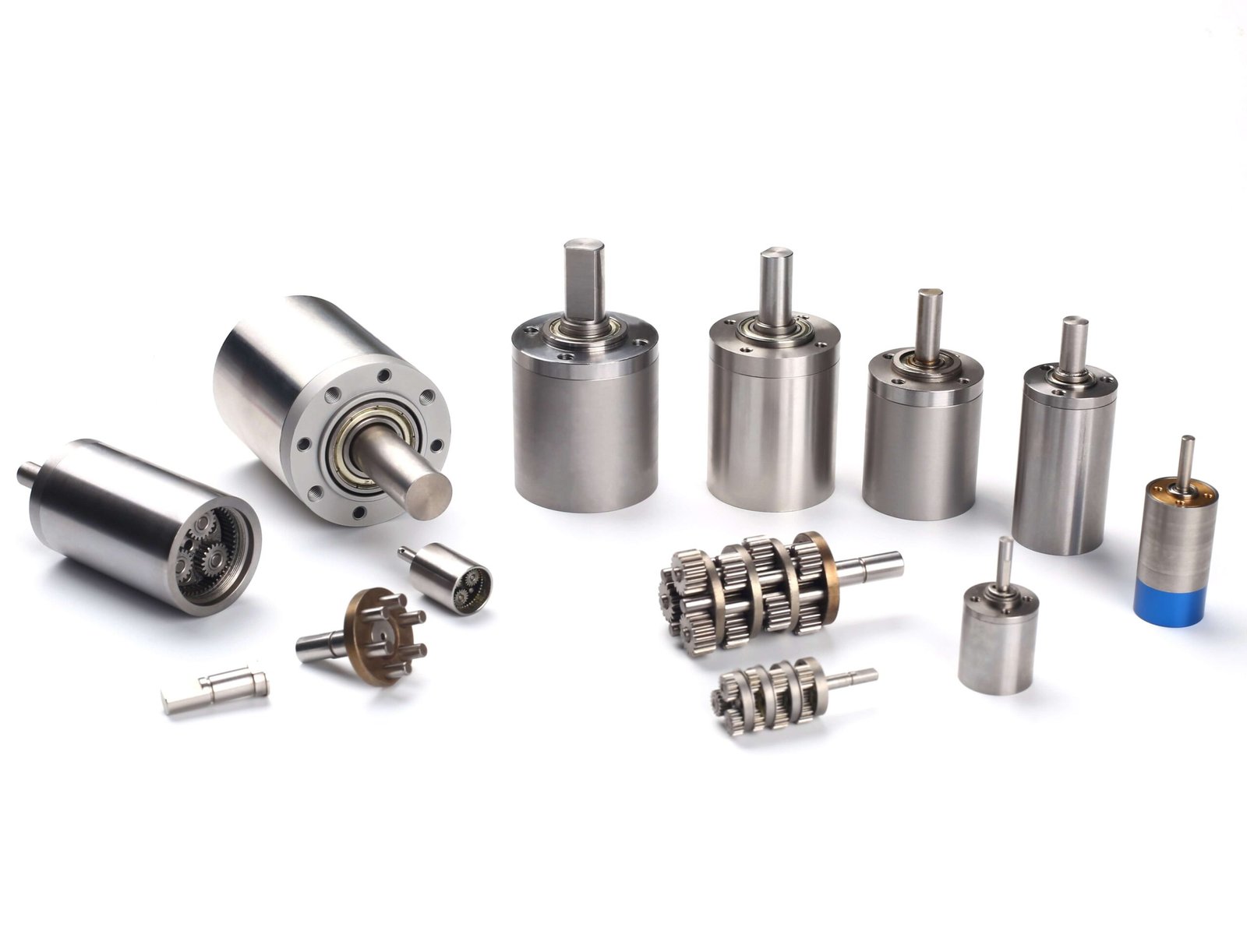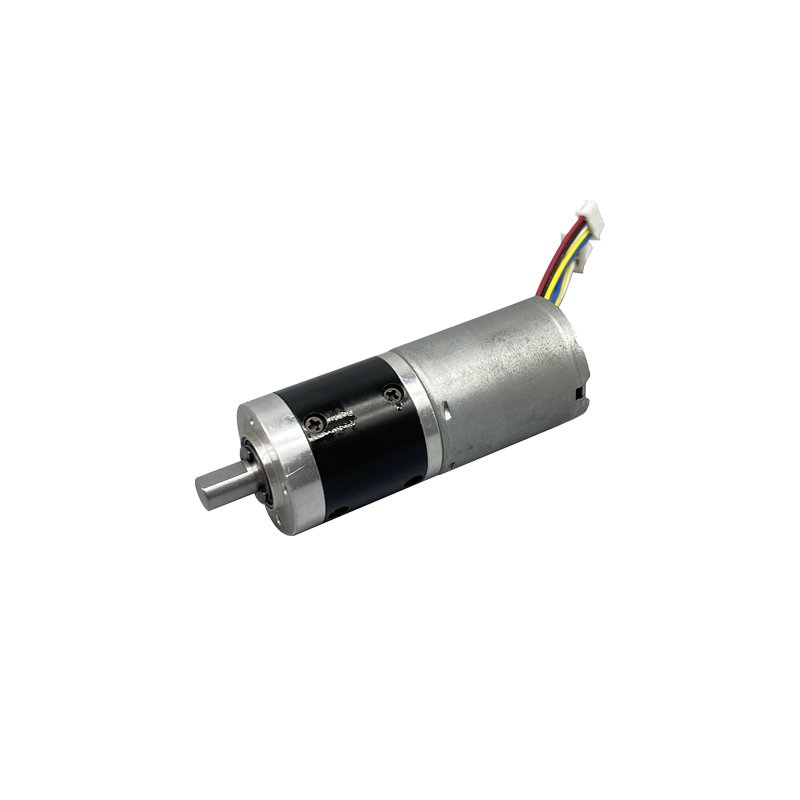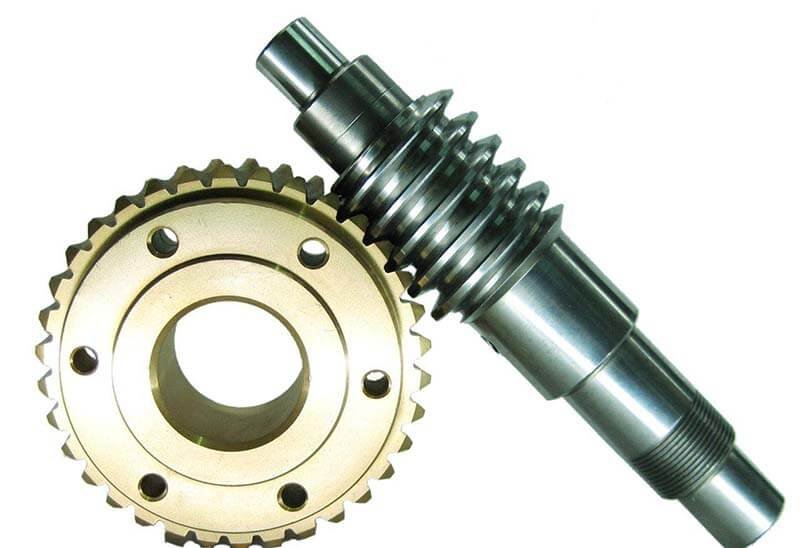Electric motor torque curves are very important for your car. They affect how your car feels and works. Electric motors give high torque right away. This helps your car speed up faster and drive smoother. The special torque curve gives you more power than gas engines. This helps you save energy and have a nicer ride.
Studies show that controlling electric motor torque can make cars up to 32% more efficient. It also keeps your car safe and steady.
When you know how torque works in electric cars, you can make better choices. You also get more out of driving your electric car.
Key Takeaways
Electric motors give their best torque right away. This helps electric cars speed up fast and drive smoothly from the start.
Knowing about torque curves helps you pick electric cars that fit your needs. It also helps you save energy every time you drive.
Good torque control makes cars use battery power better. This lets your car go farther on one charge.
Checking torque curves helps keep your electric car in good shape. It can lower repair costs and help your car last longer.
Electric cars feel different than gas cars. Their torque stays strong even when going slow. This makes driving more fun and quick to respond.
Electric Motor Torque Curves
Torque Curves Explained
When you look at an electric motor torque curve, you see a graph that shows how much turning force, or torque, the motor can make at different speeds. The vertical axis shows torque, and the horizontal axis shows how fast the motor spins (rpm). This curve helps you understand how the electric motor works in real life. Most electric motors give you maximum torque right from zero speed. As the speed increases, the torque stays steady for a while. After a certain point, called the base speed, the torque starts to drop. This area is known as field weakening. You might also see two lines on the graph: one for peak torque, which the motor can only handle for a short time, and one for continuous torque, which the motor can keep up without overheating.
Tip: If you want to know how your electric vehicle motors will perform, always check the torque curve. It shows you where the motor works best and how much power you can expect at different speeds.
Some important electric motor characteristics you should know include:
Starting torque – the force at zero speed.
Pull-up torque – the lowest torque as the motor speeds up.
Breakdown torque – the highest torque before the motor stalls.
Torque and Speed Relationship
You might wonder why the relationship between torque and speed matters. When you study the torque curve, you learn where the electric motor runs most efficiently. At low speeds, the motor gives you steady power with less energy use. This is the constant torque region. As speed goes up, the torque drops, but the motor can still deliver strong performance for short bursts using peak torque. By understanding this curve, you can avoid pushing the motor too hard, which keeps it from overheating and helps it last longer.
Engineers use the torque-speed curve to design electric vehicle motors that save energy and give you smooth acceleration. They look for the point where the motor makes the most torque with the least energy. This helps you get better performance and more miles per charge. The curve also guides you in choosing the right motor for your needs, making sure you get both power and efficiency.
Instant Torque and Performance
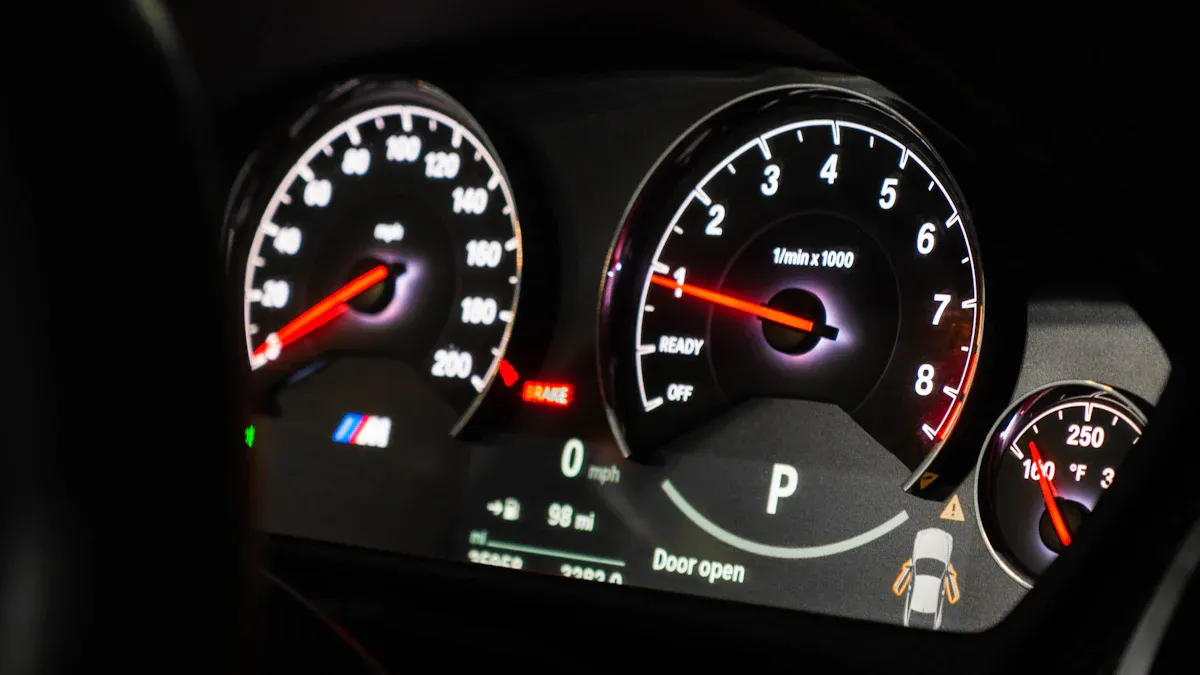
Acceleration Benefits
When you drive an electric car, you feel something special right away. Instant torque gives you power as soon as you press the pedal. Gas cars need time to build up speed. Electric motors give their best torque from the start. This means you can speed up fast without waiting for the engine.
Car makers show off this by sharing how fast electric cars go from 0 to 60 mph. Even big and heavy cars like the Tesla Cybertruck Cyberbeast and Rivian R1S Quad Motor SUV can reach 60 mph in just 2.6 seconds. This quick speed comes from the electric motor’s high torque at low speeds. You get better performance than many sports cars.
Vehicle/Model | 0-60 mph Time (seconds) | Weight (lbs) | Torque (lb-ft) | Notes |
|---|---|---|---|---|
Tesla Cybertruck Cyberbeast (2025) | 2.6 | 6,800+ | 845 | Tri-motor AWD, heavy but fast |
Rivian R1S Quad Motor SUV (2025) | 2.6 | 6,824 | 1,198 | Quad motor AWD, high torque |
You might wonder how horsepower and torque help you speed up. Instant torque means the motor reacts in less than 50 milliseconds. This makes the car speed up quickly and makes driving more fun. Tests show that better torque control can make cars speed up almost 28% faster. The chart below shows electric cars are quicker than gas cars from 0-60 mph:
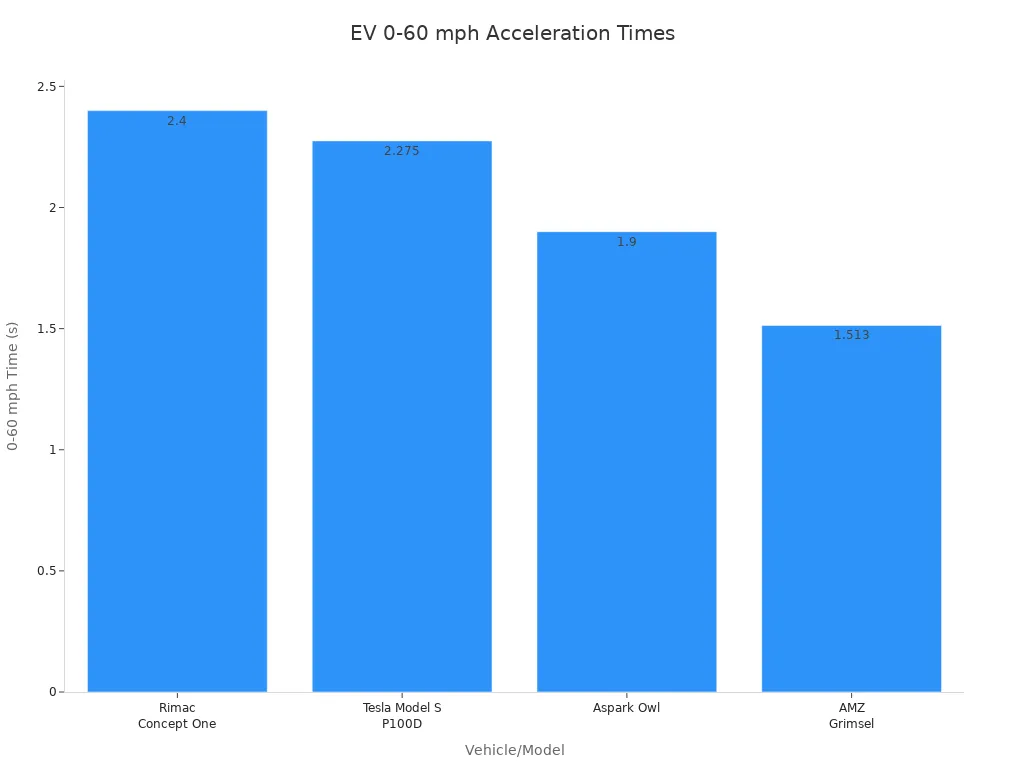
You get more torque at low speeds, so you can join highways or pass other cars easily. This is why instant torque is important for people who want strong speed and great performance.
Driving Experience
Instant torque does more than make your car fast. It changes how you feel when you drive. In an electric car, you feel smooth and steady power. The motor gives you control and helps you feel safe, especially in traffic or when you need to move quickly.
You might ask why this matters every day. Instant torque makes your car react faster. You do not feel the slow or rough gear changes like in gas cars. Electric cars have a simple powertrain, so there is less shaking and noise. This makes driving feel nicer and more modern.
Electric cars give high torque right away, so every drive feels smooth.
The quick reaction helps you stop or turn fast when needed.
You feel more in control, even in busy places or on slippery roads.
But too much instant torque can make the car move too quickly, so engineers add controls to keep things safe and comfortable. You get fast speed but still feel steady. People who love cars enjoy this because it connects them to the road. Everyday drivers like how easy and safe it feels.
You also see how horsepower and torque help you speed up in real life. The motor’s quick reaction means your car moves as soon as you want. This is why electric cars set new records for performance and fun driving.
Torque and Efficiency
Energy Use
You might ask why the torque curve shape matters for energy use. The answer is that the right torque curve helps your motor use battery power better. This means less energy is wasted when your car moves. When the motor gives the right torque at the right speed, you use less energy. You can drive farther on one charge and spend less on electricity.
Researchers found that changing the torque curve with temperature helps a lot. For example, a study on all-wheel-drive electric trucks showed this saves up to 7% more energy than a fixed way. The system checks how hot the motors get and changes the torque for each axle. This smart method cuts power loss and makes the car more efficient, even on long trips or in hot weather.
Tip: To get the most from your electric car, pick models with advanced torque control. These systems help you save energy and keep your car running well.
New electric motor technology also changes how torque curves work. For example, coil switching lets the motor change its windings for different speeds. This helps the motor keep high torque at low speeds and stay efficient at high speeds. You get strong performance without wasting energy.
Technology Feature | What It Does | Why It Matters for You |
|---|---|---|
Coil Switching | Changes motor windings for best torque at any speed | Keeps your car powerful and efficient |
Field Weakening | Lowers magnetic field for higher speeds | Lets you drive fast without losing efficiency |
Motor Design Improvements | Allows better control of torque and energy use | Gives you more miles per charge |
Maintenance and Longevity
You may wonder why watching torque curves helps your electric car last longer. Torque curves are like a health check for your motor. By checking how torque changes, you can find problems early.
Modern electric cars use sensors and software to watch torque and other motor signals. These systems can spot early signs of trouble, like extra shaking or strange motor sounds. If the system finds something odd in the torque curve, it can warn you or your mechanic. This lets you fix small problems before they get worse.
Note: Predictive maintenance uses real-time motor data to plan repairs only when needed. This saves you time and money and keeps your car on the road longer.
Studies show that advanced torque control helps stop common motor problems. For example, it keeps the motor from getting too hot, lowers wear on parts, and protects the magnets inside. This means your electric car runs smoother and lasts longer.
You also spend less on maintenance. Electric cars already cost less to fix than gas cars because they have fewer moving parts. With smart torque management, you save even more. The table below shows how much you can save:
Aspect | Internal Combustion Engine (ICE) Vehicles | Electric Vehicles (EVs) | Notes |
|---|---|---|---|
Scheduled Maintenance Cost | 10.1 cents per mile | 6.1 cents per mile | Nearly 40% lower maintenance cost per mile for EVs |
Maintenance Cost for 30,000 miles | $3,030 | $1,830 | Significant savings over typical vehicle lifespan |
Maintenance Cost for 20-vehicle fleet | $60,600 | $36,600 | $24,000 total savings for fleet |
Key Reasons for Savings | Complex moving parts, oil changes, brake wear | Mechanical simplicity, no oil changes, regenerative braking, fewer moving parts | EVs have fewer components requiring maintenance, leading to lower costs and downtime |
Brake Maintenance | Frequent brake pad and rotor replacement | Longer-lasting brakes due to regenerative braking | EVs reduce brake wear, lowering maintenance frequency |
Tire Maintenance | Standard tire wear | Increased tire wear due to instant torque | Requires more frequent tire rotation and pressure checks |
Battery Maintenance | N/A | Battery capacity degrades over time, covered by warranty | Battery wear is a unique EV maintenance consideration but generally managed |
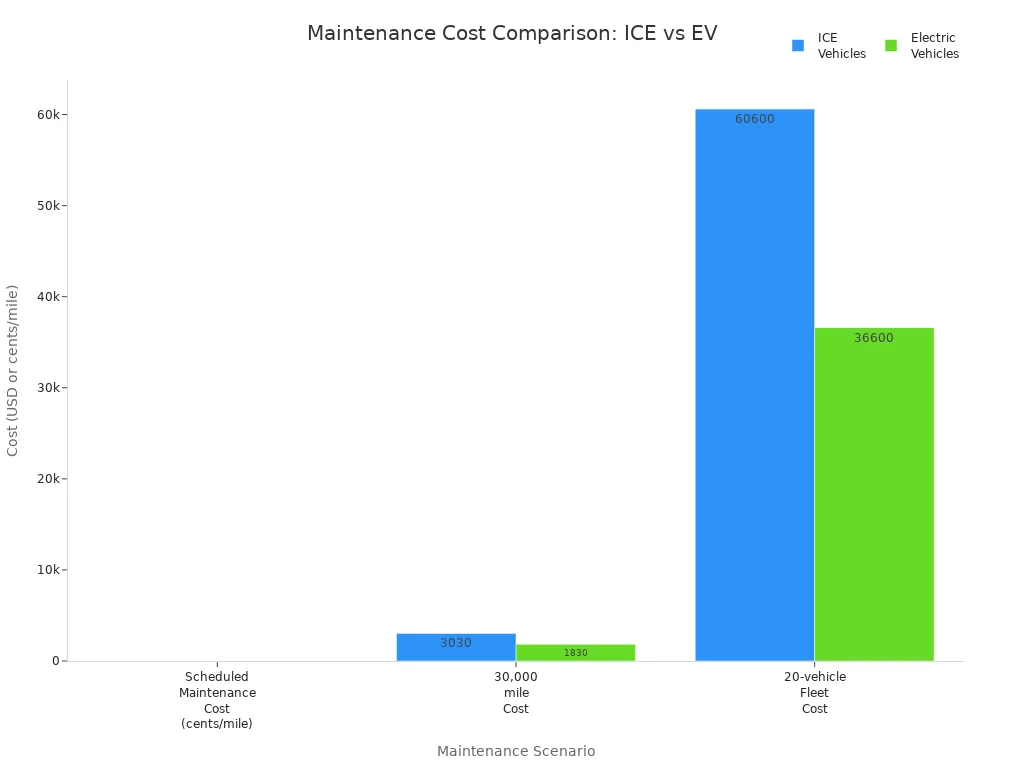
By learning about torque curves and watching them, you help your electric car stay efficient, reliable, and cheap to own. This is why torque curves matter for both energy use and long-term care.
Torque and Horsepower in Electric Vehicles
Electric vs. Gas Engines
You may notice electric cars feel different from gas cars. This is because of how each motor gives power. Electric motors give their best torque right away, even at zero speed. Gas engines need to get faster before they reach their top torque. This makes the car react differently when you press the pedal.
Here is a simple table that compares electric and gas engines:
Motor Type | Peak Horsepower | Peak Torque (lb-ft) | Torque Curve Characteristics |
|---|---|---|---|
Internal Combustion Engine (GM 5.3L V8) | 345 HP | 400 | Torque peaks at higher RPM, then declines |
Electric Motor (Dana MV800) | 330 HP | 592 | Maximum torque available instantly from 0 RPM, flat curve |
Electric motors have more peak torque than gas engines. Their torque curve stays flat over many speeds. Gas engines only reach their best torque at high RPM. In a gas car, you wait for power. In an electric car, you get it right away.
Electric motors give all their peak torque at 0 RPM.
Gas engines must speed up to reach their best torque.
Horsepower and torque affect how fast you speed up and how strong the car pulls.
Real-World Impact
Why does this matter when you drive every day? The mix of torque and horsepower in electric cars gives you quick and smooth starts. You feel the car move as soon as you touch the pedal. This instant power helps in traffic and when you join highways.
Horsepower and torque each do something special for your drive. Torque gives you a strong push at the start. Horsepower keeps you moving fast once you are going. In electric cars, both work together for quick starts and steady driving.
Tests show that using real torque curves helps engineers know how a car will act and how much energy it uses. They use the real torque curve to see how the car speeds up, shifts, and uses power. This means you get better efficiency and less pollution because the motor gives power only when needed.
Tip: If you want a car that feels fast and saves energy, pick one with a strong torque curve and smart power control.
Now you can see why electric cars are special. They have more peak torque and give power right away. This makes them more fun and efficient. Knowing about horsepower and torque helps you pick the best car for you.
If you learn about electric motor torque curves, your car can work better and use less energy. You can pick the best motor for what you need. This helps you save power and makes driving smoother. When you know how torque and speed go together, you can get ready for hills, fast starts, or long drives. Using torque curves the right way means your car breaks down less and costs less to fix. If you want driving to feel great, always look at the torque curve before you choose.
FAQ
Why do electric motor torque curves matter for daily driving?
You feel smoother and faster starts because of the torque curve. The curve shows why your car reacts quickly when you press the pedal. You get better control and a safer drive every day.
Why should you check the torque curve before buying an electric car?
You see how the car will perform at different speeds. The torque curve helps you pick a car that matches your needs. You avoid surprises and get the best driving experience.
Why does instant torque make electric cars more fun?
You enjoy quick acceleration because instant torque gives power right away. This makes your car feel lively and exciting. You notice the difference every time you drive.
Why does understanding torque help you save money?
You use less energy when you drive in the most efficient range. The torque curve shows you where your car works best. You spend less on charging and maintenance.
Why do engineers care about torque curves?
Engineers use torque curves to design motors that last longer and run better. They find ways to keep your car safe and efficient. You benefit from their work every time you drive.

